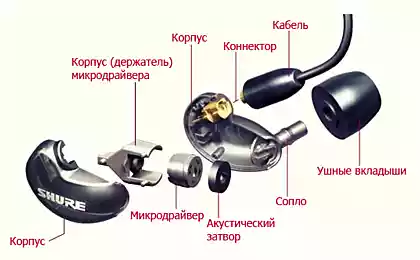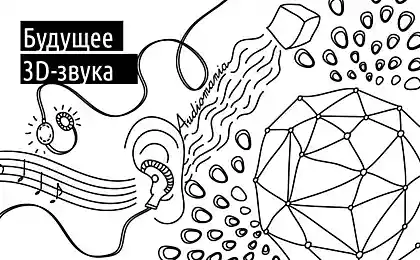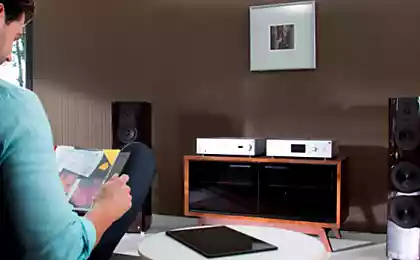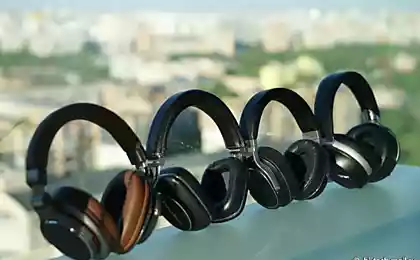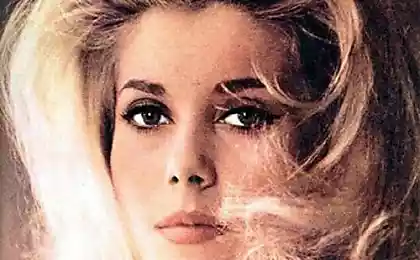2591
The history of sound film. From Mono to Dolby Atmos
The sound effects have become an integral part of modern films, their realism is constantly being improved and what we hear now in the film - the result of hard work of many people over 90 years. About how we have come to this, and why you should see "Mission Impossible" in a theater equipped with Dolby Atmos system will cover in this article.

The history of multichannel audio
The first multi-channel recording to play in the movie was used in 1941 for the cartoon «Fantasia» from Disney. Recording engineers then made a huge leap in audio format by clicking on the three-channel mono audio (2 front and center), recorded on film optically.
Why is this step was great? The sound in a movie, and so is relatively recent. The first movie with synchronized sound track voice became a musical film "The Jazz Singer", which was published in 1927, and the first sentence of the protagonist, "Wait a minute! You still have not heard anything! "Became a symbol of a new era of sound film. And now imagine how the audience reacted at that time with a new sound. If earlier we heard the same sound from all speakers, you can now clearly positioned the right and left of the audiokartiny.
But the further development of multi-channel audio has been suspended for 10 years, the main reason for that was the 2nd World War.
A new impetus to the development of multi-channel has been actively improving the tape recording. The first tape recorders were captured, brought from Germany, and the very name of "tape" - it has become a household name of the model AEG Magnetopfon.

Further development of multi-channel audio in the United States continued. The first multi-track tape recorder was invented by a famous musician Les Paul (the inventor of the electric guitar, without which it is impossible to imagine modern music), he also conducted the first before recording a mono tape recorder.
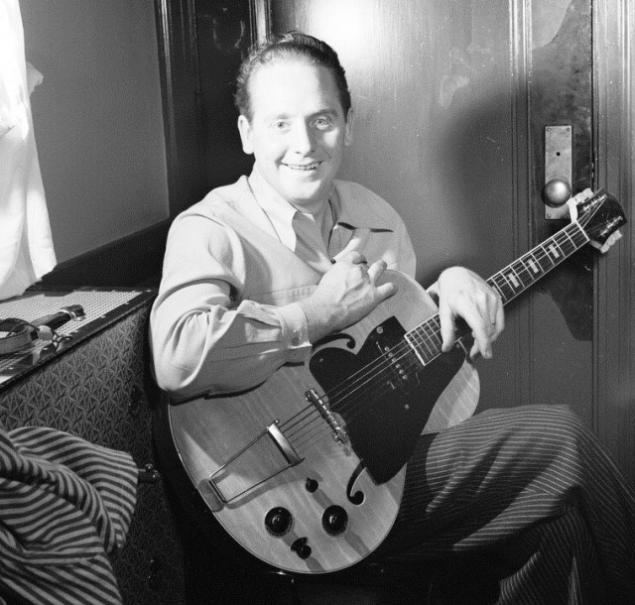
The sound in cinemas
In the movie, the first surround sound formats recorded it using tape, on film, instead of the optical track became applied to the magnetic layer, and projectors equipped with a tape recorder heads for soundtracks. In the future, due to the increasing popularity of cinema and experiments in film format, the industry has moved to a format - Widescreen Cinemascope on 35mm film with Anamorphic (during shooting and playback) and 70 mm instead of 35 mm film. Large screens require an appropriate sound effects. At that time, in cinemas were used two basic audio format: for Cinemascope (4 channels - left front, right front, center and surround, solid array located behind and to the side of the audience) by 20th Century Fox and Todd AO to 70 mm (6 had already channels where added one additional channel to the left and right at the front, due to the huge size of the screen).
A curious fact: The central channel has become necessary because of the large size of the cinema, when the dialogue to the audience left and right are not heard from the center. The center speaker also provides a clear positioning throughout reproduced speech. In the future, the center channel and kept the working title «dialog».

The sound track of the time was very different from today, but in fact the number of channels has changed. The fact is that at that stage technology development was very complicated, and high-quality sound effects in those days were not so popular. The formats also were not as common as equipment for their reproduction cost is very expensive, and it could afford only the most successful theaters.
The company Dolby
In the mid-70s the company comes into play Dolby, initially earned a name for Dolby A noise reduction system and Dolby B for professional and amateur recording. But success in this area of the creator Ray Dolby was little and he turned his attention to cinema. In 1971 came the first film, in recording the soundtrack to which used noise reduction Dolby A - it was the "sensational" then "A Clockwork Orange." This technology has allowed to expand the dynamic range of reproduced frequencies in the audio soundtrack of the film.
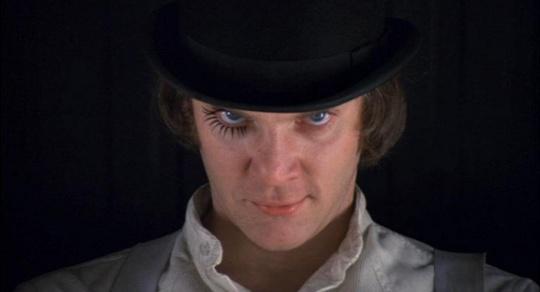
In 1974, Dolby introduced the world to a new recording format Dolby Stereo, which is used in the record so far (he is not alone, of course).

Stereo concept of those days is very different from how it is understood now, today - this designation two-channel audio. To use the term multi-channel surround sound, which appeared, by the way, thanks to the introduction of multi-channel audio technologies in domestic theatrical system. In those days, the term is meant Stereo surround sound. This format is returned to the optical film and the track record for the four existing channels. The sound of the front channels in such a decoding remained unchanged, volume audio effects obtained by subtracting the left front from the right (by phase reversal) and filtering the signal in the range below 100 Hz and above 7kGts.
With a central channel there was a small snag, because the classic sound of the center channel - a mixture of the sound of the front left and right with volume increasing by 3dB. That is the sound of voices was heard in front pairs, but at 3dB quieter. Dolby used a clever system to improve channel separation, depending on the situation: if the dialog can be heard in the silence, the sound of the front channels is further muted, as if it was with the music (if you use the previous method, it was hard to hear the music, but also it has increased in volume between speech puzah) for synergy of two tracks were used in the sound mixing of antiphase right channel to the left and vice versa. Naturally clear positioning sound effects recordings with Dolby technologies will not appear immediately, because it was quite difficult to clearly identify and separate the dominant sound and special effects. But the company has constantly improved the cinema and technology, and the sound quality in the new format has reached unprecedented heights.
Enormous the popularity of this format brought the film by George Lucas - "Star Wars" in 1976 to show in this film the greatest, at the time, the quality of audio and video effects movie gained huge popularity and promoted the use of the Dolby Stereo in cinema. George Lucas, in principle, has made a huge contribution to the world record, but more on that later.
While already actively developing domestic television, cinema began to visit less often, but the record of rolling version of the film was not cheap and poor quality differed. Dolby Stereo significantly reduce the cost of home movies, making it available to the general public.
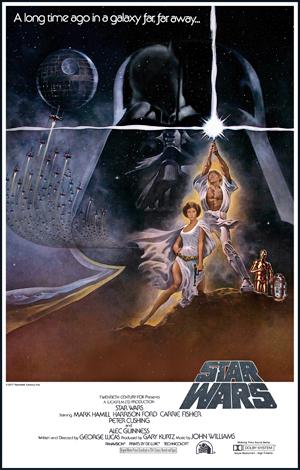
To support high quality sound in cinema Dolby introduces strict certification cinemas, and a company logo becomes the bait for the audience, as a similar sound was impossible to implement at home.

Later digging Dolby reached and wide screens, bringing to the world the first 5.1 system that is used today.
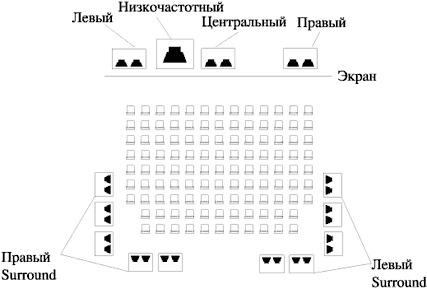
Available speakers to reproduce bass signal has become a new breakthrough in the special effects giving thundering explosions and realistic effects (the first film was the 5.1 "Apocalypse Now," Francis Ford Coppola).
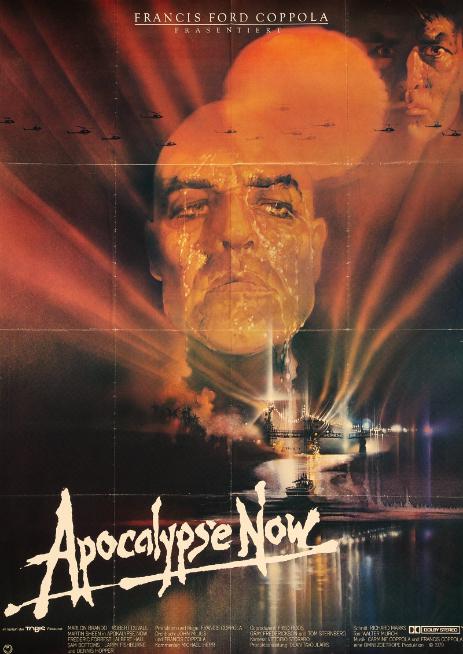
Yet the popularity of widescreen movies began to fall, so a large number of movies with this type of soundtrack has been established.
Home theaters
A new round of kinozvuka started in the 80s, at this time actively developing home video appeared laser videodisc. It is also widely used home Hi-Fi stereo system. In 1982, the company released a Dolby decoder is capable of decoding Dolby Surround 3 channel (left + right front and surround). For the majority of the audience this was enough, but due to the growing popularity of large TV diagonal 27 & quot ;, in 1987 was presented to the decoder Dolby Surround Pro Logic, capable of removing the 4-channel sound from two-channel soundtrack. Since the world began to appear first home theater systems based on the Hi-Fi equipment. They quickly seized the market and of luxury goods have become commonplace.
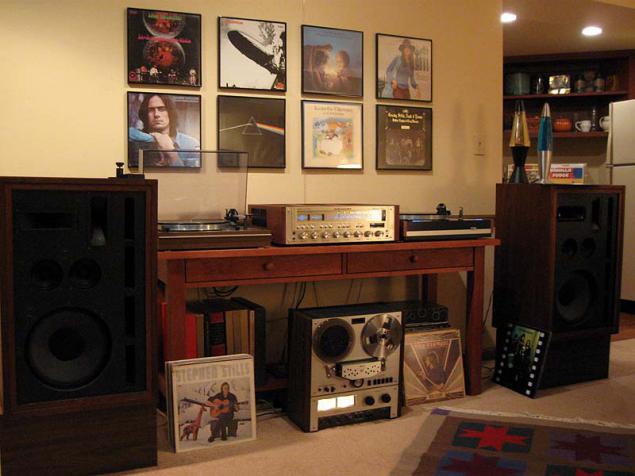
In the 90s began to develop actively a digital recording, the band released the CDS format digital audio track, instead of analog layout metadata was carried out using pixels on the film. But because of the level of technology often there is a problem of loss of sound associated with errors in the audio track.

Dolby Digital
In 1992, the second year of the premiere of the film «Batman Returns» introduced a new digital recording format Dolby Digital, is widely used in our time. This format is used duplicate digital and analog audio tracks (as a backup) and was able to get rid of problems with the sound interruption. This format was developed as a generic for various media and has become one of the mandatory recording DVD.
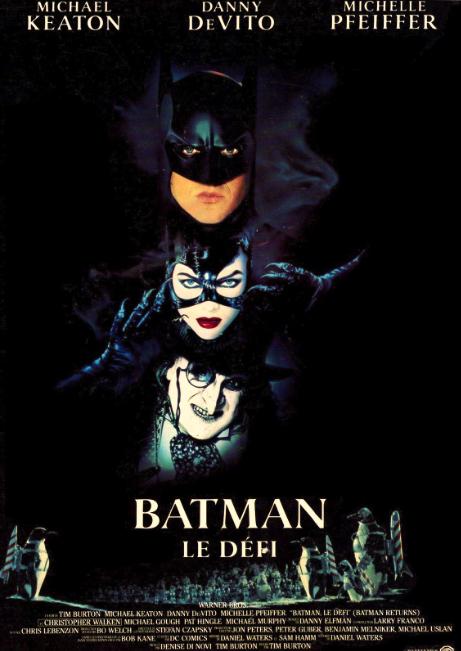
Dolby Surround EX
In 1999, together with Dolby THX and Skywalker Sound Studios is developing a new format Dolby Surround EX specifically for the 1st episode prequel "Star Wars" - "The Phantom Menace." This format allows you to record audio format 6.1, which gave an additional palette of sound engineer sound picture.

THX
About THX is to tell apart. THX - this is not the format of the recording, it is a common standard for the reproducing apparatus that would be when playing the sound was the same as he heard the sound engineer.
Interesting and the story of his appearance. When George Lucas made the film "Return of the Jedi" from the first trilogy of "Star Wars", was conducted a test screening of the film in the cinema. The result did not satisfy the director as all ideas concerning the audible effects of the equipment at the time could not reproduce physically. Then the company was founded THX named after Lucas' first film «THX 1138". The developers were given the task to work out strict rules for the theater to the soundtrack when playing is not different from the one who hears the sound, the quality should be the maximum. The company also set up a high-quality crossover, unique at that time the market was not. THX certification had to pass as recording studios and movie theaters. Since 1990, it began to pass and home audio system.

DTS
In 1993 there was one popular format DTS (Digital Theatre Systems), created for the film "Jurassic Park." This format reproduces an audio track synchronous with the video, but with a separate laser medium. At home formats DTS uses a fundamentally different coding system, this system allows you to reproduce the sound with the characteristics of human hearing, as well as store up to 8 independent tracks. Although the principles are different coding systems, the name of the same is used, probably for marketing purposes.
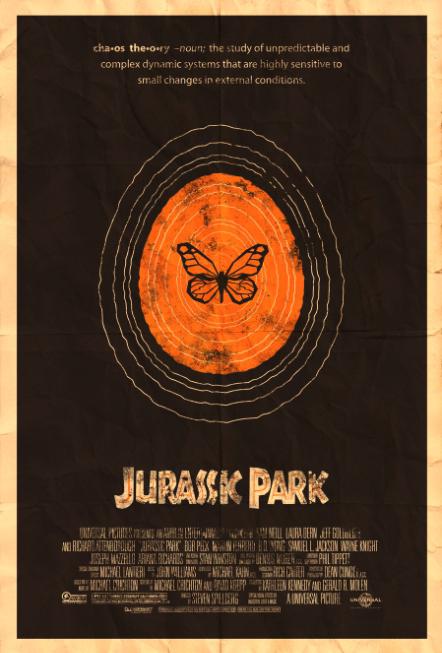
Dolby Atmos
And finally, I want to tell you about a new sound format for home theater - Dolby Atmos, which was first presented in 2012. If the distribution of ordinary sound in classical systems have multi-channel audio, we can be considered as two-dimensional, horizontally (the sound of the right, left, front, rear), the Atmos enables a fully three-dimensional sound with a vertical plane. This technology opens up the possibility soundtracks effects exist independently of each other, as they do not reduce sound engineer once and for all, and there are separate and treated with a special processor. Additions to the Dolby Atmos cinema steel ceiling speakers and additional subwoofer. The first film in this audio format became 3D cartoon "Braveheart."
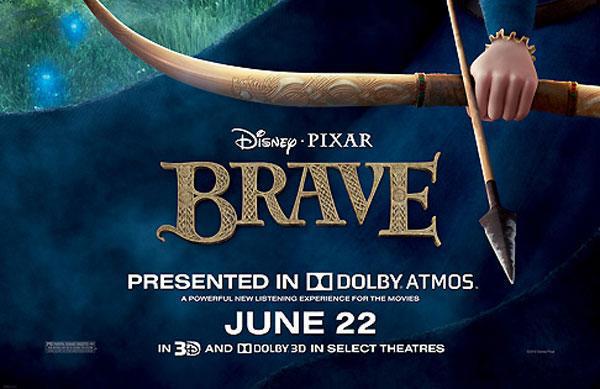
But that's not all, this format is also implemented in the domestic theatrical system. Such producers as a Hi-Fi Onkyo, Yamaha, Marantz, Denon, Pioneer, already released receivers with support of the decoder. To make Atmos cinema house optional recessed ceiling speakers, speaker and receiver manufacturers already make an extra set of speakers, which is installed on the front and a pair of works by sound reflection from the ceiling.
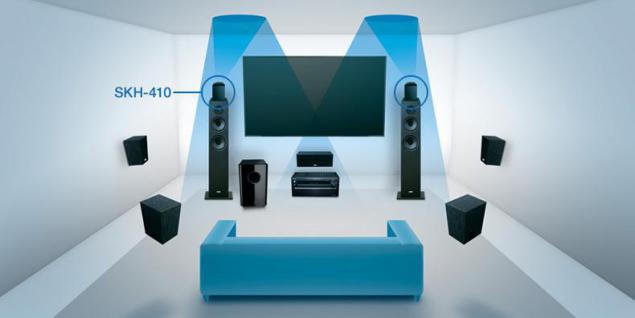
I myself was lucky enough to test the system on a home Dolby Atmos, the presentation of which was held in the conference room, not specially prepared for the demonstration. Showed a movie about the rainforests. I was able to hear very interesting and realistic effects: firstly, the effect of raindrops falling on top of it, that is the sound of the fall extends from top to bottom. But what I really like is the effect of a flying bird. On the hummingbird flew over his head and then went back in an arc on the left side of the scene. I clearly heard the position of birds in space, that is not only the right or left, but on the head or face level. The sound was very realistic. If you manage to combine the technology of sound with a helmet like Oculus can be obtained as a result of the full effect of participation in a movie.
Muscovites can appreciate the Atmos technology today, watching the film "Mission Impossible" in one of the 3 theaters «Formula Kino" or one of the 6 cinemas «Premium» .
And if you want to build home system with Dolby Atmos, we recommend that you look for such a kit:
- Ресивер Onkyo TX-NR636
- Колонки for Dolby Atmos Onkyo SKH-410
- And any Hi-Fi 5.0 acoustics
About how to assemble and set up the equipment for home theater I'll discuss in the next article.
Source: geektimes.ru/company/icover/blog/259836/

The history of multichannel audio
The first multi-channel recording to play in the movie was used in 1941 for the cartoon «Fantasia» from Disney. Recording engineers then made a huge leap in audio format by clicking on the three-channel mono audio (2 front and center), recorded on film optically.
Why is this step was great? The sound in a movie, and so is relatively recent. The first movie with synchronized sound track voice became a musical film "The Jazz Singer", which was published in 1927, and the first sentence of the protagonist, "Wait a minute! You still have not heard anything! "Became a symbol of a new era of sound film. And now imagine how the audience reacted at that time with a new sound. If earlier we heard the same sound from all speakers, you can now clearly positioned the right and left of the audiokartiny.
But the further development of multi-channel audio has been suspended for 10 years, the main reason for that was the 2nd World War.
A new impetus to the development of multi-channel has been actively improving the tape recording. The first tape recorders were captured, brought from Germany, and the very name of "tape" - it has become a household name of the model AEG Magnetopfon.

Further development of multi-channel audio in the United States continued. The first multi-track tape recorder was invented by a famous musician Les Paul (the inventor of the electric guitar, without which it is impossible to imagine modern music), he also conducted the first before recording a mono tape recorder.

The sound in cinemas
In the movie, the first surround sound formats recorded it using tape, on film, instead of the optical track became applied to the magnetic layer, and projectors equipped with a tape recorder heads for soundtracks. In the future, due to the increasing popularity of cinema and experiments in film format, the industry has moved to a format - Widescreen Cinemascope on 35mm film with Anamorphic (during shooting and playback) and 70 mm instead of 35 mm film. Large screens require an appropriate sound effects. At that time, in cinemas were used two basic audio format: for Cinemascope (4 channels - left front, right front, center and surround, solid array located behind and to the side of the audience) by 20th Century Fox and Todd AO to 70 mm (6 had already channels where added one additional channel to the left and right at the front, due to the huge size of the screen).
A curious fact: The central channel has become necessary because of the large size of the cinema, when the dialogue to the audience left and right are not heard from the center. The center speaker also provides a clear positioning throughout reproduced speech. In the future, the center channel and kept the working title «dialog».

The sound track of the time was very different from today, but in fact the number of channels has changed. The fact is that at that stage technology development was very complicated, and high-quality sound effects in those days were not so popular. The formats also were not as common as equipment for their reproduction cost is very expensive, and it could afford only the most successful theaters.
The company Dolby
In the mid-70s the company comes into play Dolby, initially earned a name for Dolby A noise reduction system and Dolby B for professional and amateur recording. But success in this area of the creator Ray Dolby was little and he turned his attention to cinema. In 1971 came the first film, in recording the soundtrack to which used noise reduction Dolby A - it was the "sensational" then "A Clockwork Orange." This technology has allowed to expand the dynamic range of reproduced frequencies in the audio soundtrack of the film.

In 1974, Dolby introduced the world to a new recording format Dolby Stereo, which is used in the record so far (he is not alone, of course).

Stereo concept of those days is very different from how it is understood now, today - this designation two-channel audio. To use the term multi-channel surround sound, which appeared, by the way, thanks to the introduction of multi-channel audio technologies in domestic theatrical system. In those days, the term is meant Stereo surround sound. This format is returned to the optical film and the track record for the four existing channels. The sound of the front channels in such a decoding remained unchanged, volume audio effects obtained by subtracting the left front from the right (by phase reversal) and filtering the signal in the range below 100 Hz and above 7kGts.
With a central channel there was a small snag, because the classic sound of the center channel - a mixture of the sound of the front left and right with volume increasing by 3dB. That is the sound of voices was heard in front pairs, but at 3dB quieter. Dolby used a clever system to improve channel separation, depending on the situation: if the dialog can be heard in the silence, the sound of the front channels is further muted, as if it was with the music (if you use the previous method, it was hard to hear the music, but also it has increased in volume between speech puzah) for synergy of two tracks were used in the sound mixing of antiphase right channel to the left and vice versa. Naturally clear positioning sound effects recordings with Dolby technologies will not appear immediately, because it was quite difficult to clearly identify and separate the dominant sound and special effects. But the company has constantly improved the cinema and technology, and the sound quality in the new format has reached unprecedented heights.
Enormous the popularity of this format brought the film by George Lucas - "Star Wars" in 1976 to show in this film the greatest, at the time, the quality of audio and video effects movie gained huge popularity and promoted the use of the Dolby Stereo in cinema. George Lucas, in principle, has made a huge contribution to the world record, but more on that later.
While already actively developing domestic television, cinema began to visit less often, but the record of rolling version of the film was not cheap and poor quality differed. Dolby Stereo significantly reduce the cost of home movies, making it available to the general public.

To support high quality sound in cinema Dolby introduces strict certification cinemas, and a company logo becomes the bait for the audience, as a similar sound was impossible to implement at home.

Later digging Dolby reached and wide screens, bringing to the world the first 5.1 system that is used today.

Available speakers to reproduce bass signal has become a new breakthrough in the special effects giving thundering explosions and realistic effects (the first film was the 5.1 "Apocalypse Now," Francis Ford Coppola).

Yet the popularity of widescreen movies began to fall, so a large number of movies with this type of soundtrack has been established.
Home theaters
A new round of kinozvuka started in the 80s, at this time actively developing home video appeared laser videodisc. It is also widely used home Hi-Fi stereo system. In 1982, the company released a Dolby decoder is capable of decoding Dolby Surround 3 channel (left + right front and surround). For the majority of the audience this was enough, but due to the growing popularity of large TV diagonal 27 & quot ;, in 1987 was presented to the decoder Dolby Surround Pro Logic, capable of removing the 4-channel sound from two-channel soundtrack. Since the world began to appear first home theater systems based on the Hi-Fi equipment. They quickly seized the market and of luxury goods have become commonplace.

In the 90s began to develop actively a digital recording, the band released the CDS format digital audio track, instead of analog layout metadata was carried out using pixels on the film. But because of the level of technology often there is a problem of loss of sound associated with errors in the audio track.

Dolby Digital
In 1992, the second year of the premiere of the film «Batman Returns» introduced a new digital recording format Dolby Digital, is widely used in our time. This format is used duplicate digital and analog audio tracks (as a backup) and was able to get rid of problems with the sound interruption. This format was developed as a generic for various media and has become one of the mandatory recording DVD.

Dolby Surround EX
In 1999, together with Dolby THX and Skywalker Sound Studios is developing a new format Dolby Surround EX specifically for the 1st episode prequel "Star Wars" - "The Phantom Menace." This format allows you to record audio format 6.1, which gave an additional palette of sound engineer sound picture.

THX
About THX is to tell apart. THX - this is not the format of the recording, it is a common standard for the reproducing apparatus that would be when playing the sound was the same as he heard the sound engineer.
Interesting and the story of his appearance. When George Lucas made the film "Return of the Jedi" from the first trilogy of "Star Wars", was conducted a test screening of the film in the cinema. The result did not satisfy the director as all ideas concerning the audible effects of the equipment at the time could not reproduce physically. Then the company was founded THX named after Lucas' first film «THX 1138". The developers were given the task to work out strict rules for the theater to the soundtrack when playing is not different from the one who hears the sound, the quality should be the maximum. The company also set up a high-quality crossover, unique at that time the market was not. THX certification had to pass as recording studios and movie theaters. Since 1990, it began to pass and home audio system.

DTS
In 1993 there was one popular format DTS (Digital Theatre Systems), created for the film "Jurassic Park." This format reproduces an audio track synchronous with the video, but with a separate laser medium. At home formats DTS uses a fundamentally different coding system, this system allows you to reproduce the sound with the characteristics of human hearing, as well as store up to 8 independent tracks. Although the principles are different coding systems, the name of the same is used, probably for marketing purposes.

Dolby Atmos
And finally, I want to tell you about a new sound format for home theater - Dolby Atmos, which was first presented in 2012. If the distribution of ordinary sound in classical systems have multi-channel audio, we can be considered as two-dimensional, horizontally (the sound of the right, left, front, rear), the Atmos enables a fully three-dimensional sound with a vertical plane. This technology opens up the possibility soundtracks effects exist independently of each other, as they do not reduce sound engineer once and for all, and there are separate and treated with a special processor. Additions to the Dolby Atmos cinema steel ceiling speakers and additional subwoofer. The first film in this audio format became 3D cartoon "Braveheart."

But that's not all, this format is also implemented in the domestic theatrical system. Such producers as a Hi-Fi Onkyo, Yamaha, Marantz, Denon, Pioneer, already released receivers with support of the decoder. To make Atmos cinema house optional recessed ceiling speakers, speaker and receiver manufacturers already make an extra set of speakers, which is installed on the front and a pair of works by sound reflection from the ceiling.

I myself was lucky enough to test the system on a home Dolby Atmos, the presentation of which was held in the conference room, not specially prepared for the demonstration. Showed a movie about the rainforests. I was able to hear very interesting and realistic effects: firstly, the effect of raindrops falling on top of it, that is the sound of the fall extends from top to bottom. But what I really like is the effect of a flying bird. On the hummingbird flew over his head and then went back in an arc on the left side of the scene. I clearly heard the position of birds in space, that is not only the right or left, but on the head or face level. The sound was very realistic. If you manage to combine the technology of sound with a helmet like Oculus can be obtained as a result of the full effect of participation in a movie.
Muscovites can appreciate the Atmos technology today, watching the film "Mission Impossible" in one of the 3 theaters «Formula Kino" or one of the 6 cinemas «Premium» .
And if you want to build home system with Dolby Atmos, we recommend that you look for such a kit:
- Ресивер Onkyo TX-NR636
- Колонки for Dolby Atmos Onkyo SKH-410
- And any Hi-Fi 5.0 acoustics
About how to assemble and set up the equipment for home theater I'll discuss in the next article.
Source: geektimes.ru/company/icover/blog/259836/


